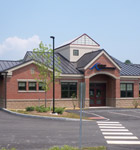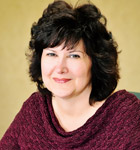The Line Up
Bling on platform pumps: Platform shoes, which have thick soles, often made of cork, plastic, or rubber, became popular in the 1960s (think disco boots). They’ve made a comeback in the past few years, particularly when decorated ostentatiously, and Fortune sold more than 500,000 pairs last year.
Color-blocking on wedges: On most shoes, the heel sits under the heel of the foot; on a wedge heel, it runs under the foot, from the back of the shoe to the front. Wedges have long been popular for their comfort, and in 2011, Fortune combined them with one of the year’s most popular fashion rends: color blocking, which pairs two or more strategically placed bold colors. Fortune sold more than 500,000 pairs last year.
Metal heels: The pump is the classic women’s dress show, and in 2011, it got an edge. Fortune sold more than 250,000 pairs of pumps with metal or metal-plated heels—a striking look that combines sexiness with ruggedness.
Creating a footwear company was the natural next step for John Auersperg Sr., who spent three decades working in the business. But as he approached 55, working for the man was no longer appealing, so Auersperg decided to leave a legacy for his sons, Paul and John Jr., and together they opened their own business. “John Sr. was a man of the orient, and had been for years. So, in 1985, Fortune Footwear began importing flip-flops, slippers, and other casual footwear from Taiwan and opened its first showroom in the SoHo building in New York City,” says Tom Paccione, chief financial officer of Auersperg’s company. “When the city started to move away from manufacturing in the 1980s, however, John Sr. got caught up in numbers game, and decided to begin making shoes of his own that would be branded for private label.”
In 1987, John Auersperg Sr.’s sons John, Jr. and Paul took the company in a new direction: women’s fashion footwear. Today, Fortune Footwear offers private-label women’s footwear and handbags to retail chains, catalog companies, and shopping networks in numbers that seem stunning. More than 10 million pairs of shoes and 3 million handbags are manufactured in China every year and distributed to customers around the globe.
In addition to managing all aspects of design, production, and distribution in-house, so it can provide the best possible service to its customers, Fortune Footwear is somewhat unique in that it manufacturers to order. “We have to be trend conscious, and that’s a big strength of ours, so we have several lines, from the middle-market comfort line to a fashionable, but inexpensive line, which we present to customers,” Paccione says. “But we only manufacture to order.”
This business model has helped the company and its 40 employees weather tough times. “No company is recession-proof, but we have been somewhat less affected by recessions, particularly the recent one, than other footwear companies because we manufacture what the customer wants,” he says. “We’re not just a pump house or a boot house; we do both
and everything in between.”
Despite the tough economic environment, Paccione is confident about the future. “We feel good about 2012,” he says. “Our design staff is positioned really well with updated materials, components, and the necessary ornamentation to make 2012 a banner year.”















